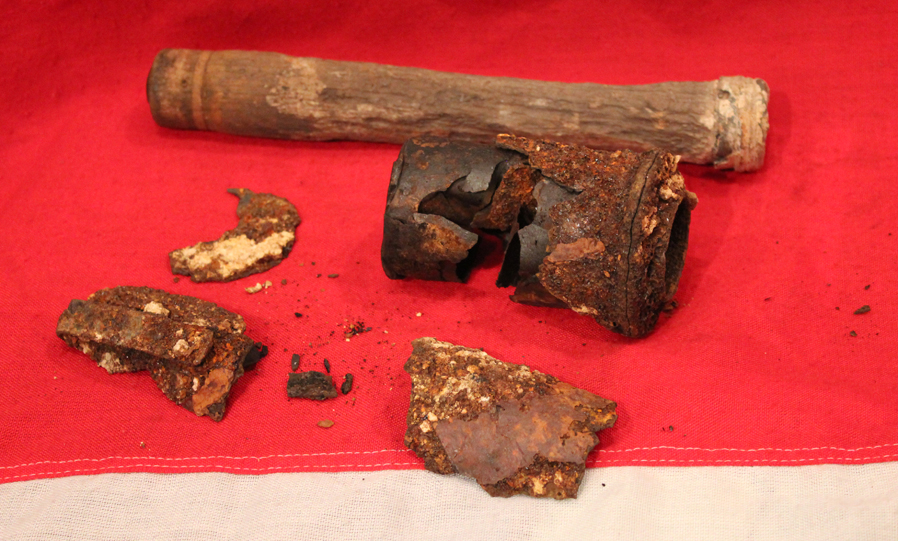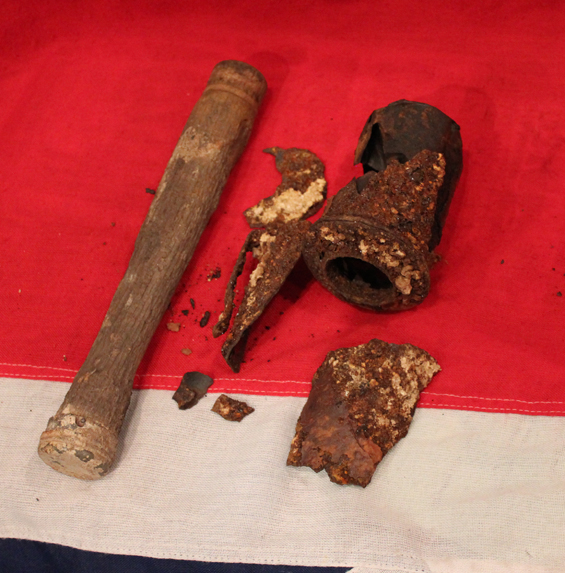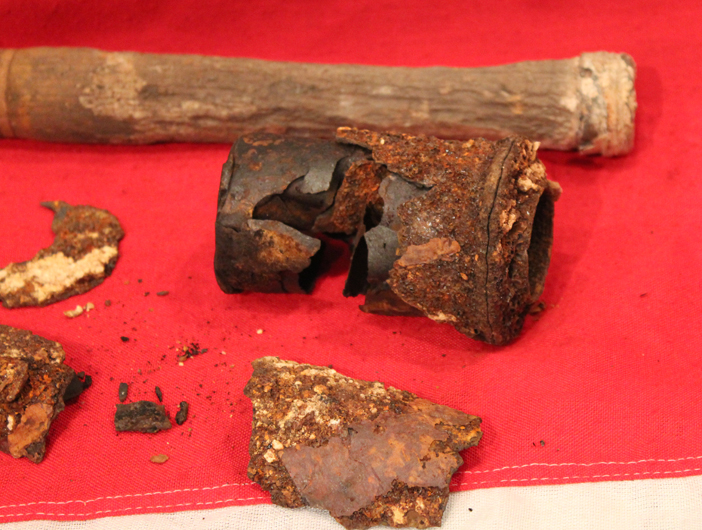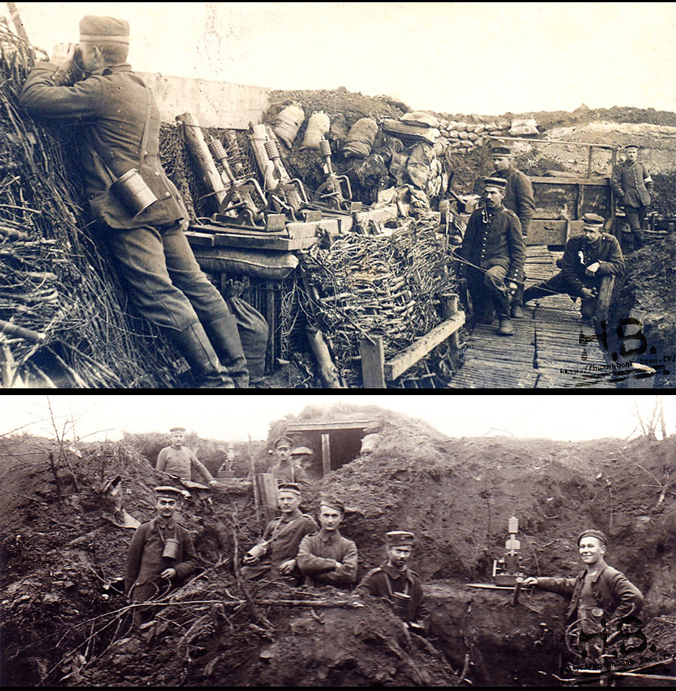A Relic WW1 German Stick Grenade, Battle Field Trench Recovery
As one can see from the photos it is in somewhat 'tired' condition. However, the best part of it, is that it certainly never killed a British Tommy, so that makes it a particularly good WW1 German grenade. It is also an incredible surviving artifact of WW1 and an iconic piece of trench warfare. The stick grenade was introduced in 1915 and the design developed throughout World War I. A friction igniter was used; this method was uncommon in other countries but widely used for German grenades.
A pull cord ran down the hollow handle from the detonator within the explosive head, terminating in a porcelain ball held in place by a detachable base closing cap. To use the grenade, the base cap was unscrewed, permitting the ball and cord to fall out. Pulling the cord dragged a roughened steel rod through the igniter causing it to flare-up and start the five-second fuse burning. This allowed the grenade to be hung from fences to prevent them from being climbed; any disturbance to the dangling grenade would cause it to fall and ignite the fuse.
The first stick grenades featured a permanently revealed pull cord which came out from the handle near the bottom (rather than tucked inside the removable screw-capped base). These exposed pull cords had a tendency to accidentally snag and detonate the grenades while being carried, causing severe (usually fatal) injuries.
Stick grenades were stored in cases for transport, and their fuse assemblies inserted prior to going into combat ? a reminder for the user was stenciled on each explosive charge ("Vor Gebrauch Sprengkapsel einsetzen", in English: "Before use insert detonator").
The stick provided a lever, significantly improving the throwing distance. The Model 24 could be thrown approximately 30 yards (27 m) to 40 yards (37 m), whereas the British Mills bomb could only be thrown about 15 yards (14 m) (however the British War Office report "WO 291/472 Performance and handling of HE grenades" gives an average figure for a standing throw of a Mills bomb as 30 yards (27 m), when crouched 25 yards (23 m) and lying 24 yards (22 m)). The stick design also minimized the risk of the grenade rolling downhill back towards the thrower when used in hilly terrain or in urban areas. However, the additional length of the handle meant that fewer could be carried.
The grenades were extremely useful for clearing out entrenched infantry positions. Although they were not individually very effective against armoured vehicles and fortifications, the grenade could be used in an improvised "bundle" style with another six explosive heads (without their sticks) wired around the central stick grenade. These were known as Geballte Ladung ("concentrated load"). Often used by special assault troops and dropped from aircraft. Inert and safe. Not suitable for Export. All safe and inert.
Code: 19767




